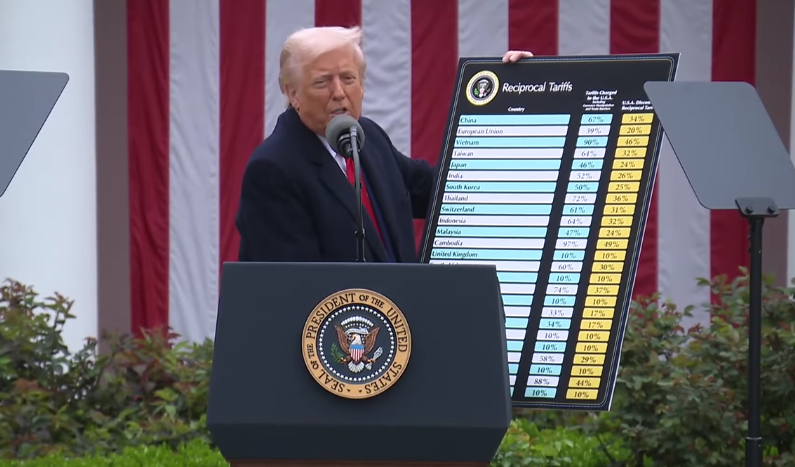The formula for U.S. reciprocal tariffs to 57 jurisdictions takes into account three factors.
Effective April 9, 2025, reciprocal tariffs from the United States to 57 jurisdictions will take effect.
Reciprocal Tariffs Formula
One of U.S. President Donald Trump’s expressed goals of this measure is to balance U.S. trade in terms of other nations’ tariff policies through the imposition of an additional tariff.
It is not publicly known what formula was used to set the reciprocal tariffs. The White House Trade Representation (USTR) reported that it considered three factors in setting the U.S. reciprocal tariff rates:
- The tariffs each jurisdiction charges the United States.
- An indicator of currency manipulation against the U.S. dollar.
- An indicator of trade barriers to the United States.
A relevant question in this regard is that Trump will decide when to reduce or increase these additional tariffs, also without a publicly known methodology.
Trade tariffs on China
Trump warned that he will impose an additional 50% tariff on China if it does not withdraw its 34% tariff on U.S. imports by April 8.
at follows China’s announcement of a new 34% tariff on U.S. products in response to Trump’s previously announced reciprocal tariff.
China had already been targeted by Trump, who imposed two additional 10% tariffs on its imports. These measures bring the total base tariffs to 54%. Adding the new 50 percent would bring the rate to 104 percent.
10% base tariff
In his reciprocal tariff proclamation, Trump imposed a 10% tariff on U.S. imports from around the world (with the exception of the 57 jurisdictions to which he applied reciprocal tariffs) beginning April 5, 2025.
This measure was supported by the International Emergency Economic Powers Act (IEEPA) of 1977 and Trump’s declaration of a national emergency.
Trump justified the measures by arguing economic and national security concerns stemming from the persistent annual U.S. goods deficit and an atrophy in its domestic productive capacity.

